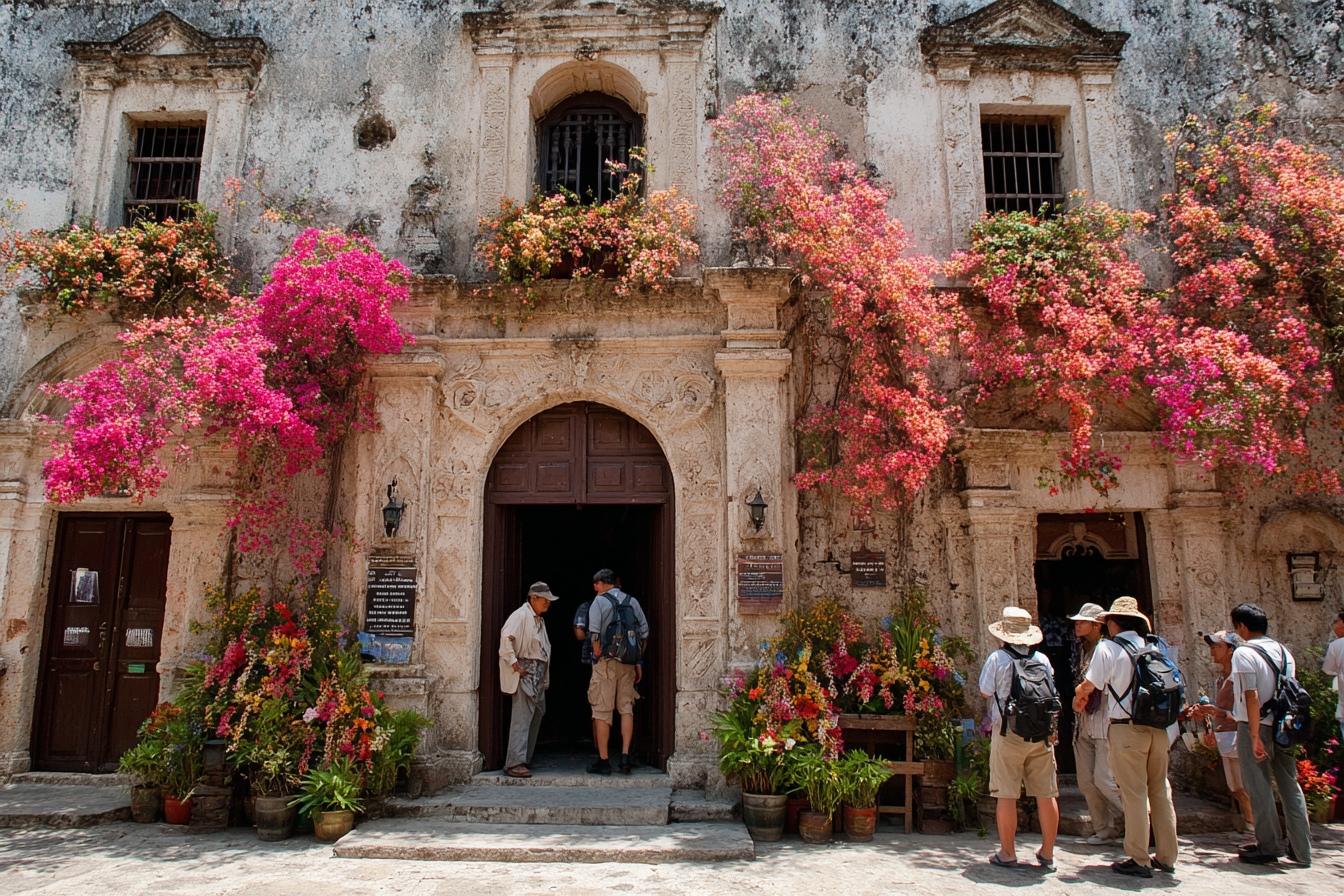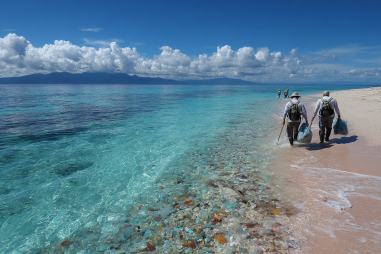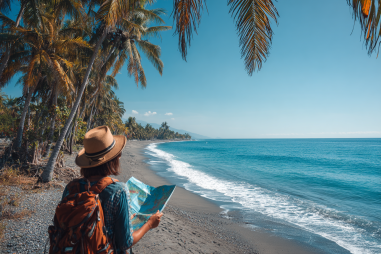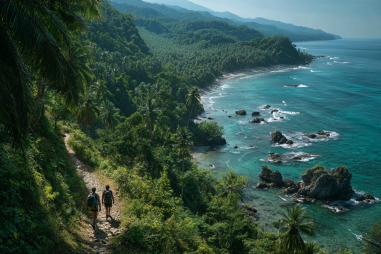Nestled in the Visayan Sea, Bantayan Island is a captivating destination brimming with natural beauty, but there’s much more beneath its pristine beaches and turquoise waters. This island holds a rich tapestry of history and vibrant cultural traditions that have been preserved through generations. Exploring Bantayan Island’s history and culture offers visitors not only a chance to witness breathtaking landscapes but also to engage with the stories, traditions, and landmarks that have shaped the community’s unique identity.
Historical Background of Bantayan Island
Bantayan Island’s history dates back centuries, rooted deeply in maritime trade, indigenous communities, and colonial influences. The island was originally inhabited by local native groups whose livelihoods revolved around fishing and small-scale agriculture. Its strategic location along important sea routes made it a key spot for trade and cultural exchange in the Visayan region.
When Spanish colonizers arrived in the 16th century, Bantayan Island became part of the Spanish East Indies. It was known as a crucial defense point against pirate raids and foreign invaders. The Spanish influence introduced Christianity and European governance systems, which played a significant role in shaping the island’s present-day culture and lifestyle.
Key Cultural Traditions and Festivals
Bantayan Island’s cultural calendar is vibrant with festivals and traditions that celebrate its deep-rooted heritage. The most famous of these events is the Holy Week celebrations. The island is renowned for its intense and faithful observance of Semana Santa, where locals participate in elaborate religious rituals, processions, and reenactments of the Passion of Christ. This event is not only a religious observance but a communal gathering that strengthens social bonds.
Another notable festival is the Bantayan Festival, which highlights local culture through dance, music, and food. It showcases traditional Filipino customs alongside contemporary influences, presenting a colorful and joyous experience. Visitors during festival times can expect to see traditional costumes, folk dances, and a variety of cultural performances.
Important Heritage Sites and Landmarks
History enthusiasts will find Bantayan Island especially rewarding due to its numerous heritage sites that speak volumes about its past. One of the most significant landmarks is the Sts. Peter and Paul Parish Church, a 16th-century stone church built by the Augustinian friars. With its fortress-like structure, it served not only as a place of worship but also as a refuge during attacks.
The church’s architecture reflects a blend of Spanish colonial and local styles, and its centuries-old bells and intricate altar remain preserved. Various watchtowers and remnants of old fortifications dotted across the island also serve as reminders of Bantayan’s tumultuous history involving pirates and invaders.
Influence of Religion and Colonial History
The Spanish colonial period strongly influenced the religious and social fabric of Bantayan Island. Catholicism became deeply embedded in the daily life of its people, shaping moral values, festivals, and community structure. The numerous churches and chapels spread across the island are testimonies to this lasting religious impact.
Beyond religion, the colonial era introduced new governance, education, and trade systems. While colonial rule brought challenges, it also opened Bantayan to a broader world, blending indigenous customs with European influences. This fusion is noticeable in local rituals, language, and social practices, where traditional Filipino values coexist with Catholic traditions.
Local Crafts and Arts
Bantayan Island is also known for its rich artisan culture. The local communities have preserved traditional crafts such as weaving, basket making, and pottery. These crafts are often made from natural materials like bamboo, coconut palm leaves, and rattan, showcasing the islanders’ harmonious relationship with their environment.
Handwoven textiles and intricately designed baskets are commonly found in local markets and make for excellent souvenirs. Additionally, there is a growing interest in preserving indigenous arts through community workshops and cultural centers, where visitors can observe or even participate in making these traditional crafts, thus helping sustain Bantayan’s artistic heritage.
Stories from the Island’s Past
The oral traditions and storytelling culture of Bantayan Island add a rich layer to its history. Elders often share tales of ancestral exploits, legendary figures, and historical events that shaped the island community. Stories recounting pirate encounters, heroic defenders of the island, and miraculous religious events are common and often retold during festivals and community gatherings.
These narratives not only preserve history but also serve as valuable tools for teaching younger generations about their identity and heritage. Visitors interested in immersing themselves in local culture are encouraged to engage with these storytellers to gain a deeper understanding of life on the island through time.
How Culture Shapes Island Life Today
Culture on Bantayan Island is not just a thing of the past; it is very much alive and influences daily life. Family ties, community cooperation, and respect for traditions remain pillars of social interaction. This can be seen in how locals organize events, maintain communal spaces, and practice age-old agricultural and fishing methods.
The fusion of history, religion, and indigenous practices create a unique rhythm to life on the island—one that values harmony with nature, spiritual devotion, and community solidarity. Even as tourism grows, there is a conscious effort to preserve these cultural elements and ensure that modernization does not erode the authentic Bantayan identity.
Museums and Places to Learn More
For travelers eager to dive deeper into Bantayan Island’s historical and cultural milieu, there are several destinations worth visiting. While the island’s museum facilities may be modest compared to urban centers, local cultural centers and heritage houses offer insightful exhibits about the island’s past.
These places often feature displays of traditional artifacts, photographs, and documents that narrate Bantayan’s journey through time. Guided tours and informational plaques accompany heritage sites like the Sts. Peter and Paul Parish Church, providing visitors with context and background stories. Some community-led cultural tours also incorporate visits to artisan workshops and historical landmarks, offering a comprehensive cultural experience.
Exploring Bantayan Island’s rich history and culture reveals more than just a pristine tropical getaway; it opens a window into the resilient spirit and vibrant traditions of its people. Whether you’re wandering through age-old churches, participating in lively festivals, or listening to captivating stories from the island’s elders, Bantayan offers a truly immersive journey into the heart and soul of the Philippines’ Visayan heritage.







